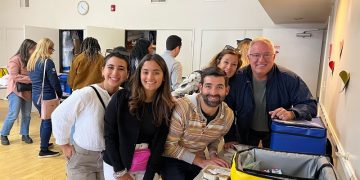
In about four weeks we will be voting on a school bond. This $485 million bond will cost over a billion dollars by the time the bond is retired in 30-40 years depending on how it is parceled out. This proposed bond has many deficiencies. Currently there is no master plan how the money is going to be spent at each school. Our school population is shrinking as families find it harder and harder to find affordable housing in Santa Monica and our City’s limited income population continuous to gray. The 15.4% “out of district” permitted students add diversity to our schools but we receive no financial benefit from their home cities, and they represent about 1/7 of our student population. Our residents already burdened with worthy State, County and Local bonds and recent sales tax increases are reaching donor fatigue. The real additional tax burden to parcel owners and tenants is unknown. Construction costs are at an all time high because of the unsustainable economic bubble we are in. And finally the vast majority of the funding for this bond’s campaign is coming not from residents, but from outside interests hoping to benefit from the bond in a City that has a tradition of overpaying for its construction (e.g. the $2.2 million toilets in Clover Park.). This is not a prudent, effective and attractive bond.
Naturally our schools need continuous upgrading as teaching methods evolve and buildings become obsolete when their long-term maintenance costs exceed their replacement costs. A School district apart from selling/leasing its property or getting a subsidy from the City or the State has no way, other than bonds, to raise the capital funds on a scale needed for our good but unbelievably expensive school buildings. Our children are going to school today in buildings that previous generations of generous residents paid for with previous bonds.
For example one of the rumored uses of this bond money might be to air-condition an unknown number of classrooms. There is good reason for this as the research is clear that students learn better in cooler classrooms and even test scores improve on cooler days. But the problem is that we need the air conditioning because, as a society, we have failed, even with all those expensive previous bonds, to build sustainable buildings. And now, we are going to add to pollution and global warming by increasing the amount of air-conditioning feeding the vicious circle that got us here in the first place?
So we would like to reframe the issuance of a bond with a challenge that we support the bond on one ambitious condition: that the first piece of the bond go entirely and only to making our entire school district electrically self sufficient in four years. This means principally roof top solar photovoltaic (PV) collectors but can also involve more efficient lighting, better window glazing, more nuanced AC controls, and a host of new and old improvement integrated technologies. Some schools, because of their roof mounted equipment, trees, or adjacent buildings cannot be effectively self sufficient, but other schools with a more advantageous solar profile may compensate with additional PV so that the the entire district has a zero electrical bill. When the district generates all the power it needs (including for new air-conditioning) we can talk about what to do with the balance of the bond. The 4 year timeframe is because the upgrades will primarily be during the summer. The advantages of this are:
These systems, when made visible, are a teachable moment for students, getting them ready for the world they will live in.
There will be a continuous trickle of savings that could enhance the financial stability of the district at a time of increasing electricity costs and possibly pay off the bond earlier.
When brown outs come in 5-10 years because of SCE’s failure to upgrade the grid (eg to anticipate the increasing load of electric cars), our schools will be unaffected.
Our school’s PV powered cafeterias and auditoriums can be cool refuges when the senior killing heat waves roll in over the coming decades.
And finally when the Big One comes (which is statistically overdue) and the whole grid is knocked out for days or weeks, our seismic resistant schools will be daytime functioning public sources of power, of food and water distribution etc etc.
In other words instead of seeing the bond as just for schools, see it as part of our survival strategy of a resilient City. Our schools will be our urban lifeboats for when our City is overcome by increasingly severe and unavoidable “storms”. A bond for survivability is much more sellable than the vague promise with unknown costs we have now.
Now the moaners and groaners will say it can’t be done in 4 years or at all. Those paralyzers got us in this mess 20 to 40 years ago when the climate crisis first became visible, and they still have no viable alternative today. Instead I would refer them to the Space Program that got us to the moon 50 years ago when the drumbeat of naysayers was equally loud and the costs frightfully high until it was in fact done. We need to think big with the same vision and courage of that type of an initiative. We could be the first electrically neutral school district in the country. This is really something that should have been done much earlier and now we need to do it as fast as is humanly possible. We also know this is just a first step, we also need to address the unsustainable use of natural gas and water at our schools before they can become true net zero buildings, but its a visionary first step.
The School Board should make this commitment publicly in the next 4 weeks to accept this challenge otherwise we don’t see why we should stick our, our children and our grand children’s necks into this financial noose when the real sustainability problem of our district (and city) is unaddressed. Remember the whole State must reach net neutrality by 2045. The school district should lead the way.
Finally we don’t need to wait for a completed district wide master plan to take this first step. Just do what’s necessary. Now!
By Mario Fonda- Bonardi AIA for SMart
Santa Monica Architects for a Responsible Tomorrow. Sam Tolkin, Architect; Dan Jansenson Building and Safety Commissioner, Architect; Mario Fonda-Bonardi, AIA, Planning Commissioner; Ron Goldman, FAIA; Thane Roberts, AIA; Bob. Taylor, AIA













